What is Ardha Chandrasana (Half Moon Pose)?
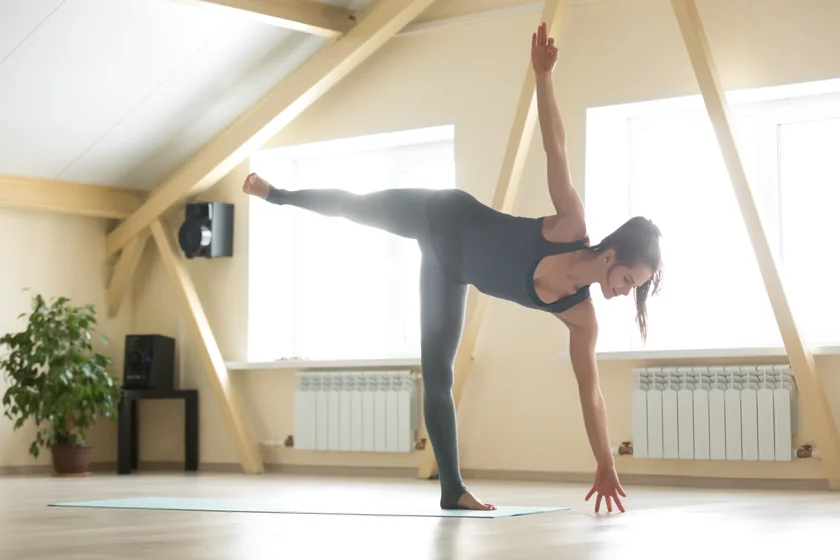
Ardha Chandrasana is also known as Half Moon Pose. This modern intermediated Hatha yoga pose is the perfect way to energize your spine, legs, and ankles.
You’ll start by balancing on a single leg in Tree pose, half-bending your upper body forward, extending your lifted leg backward, and making a T shape with your arms. Finally, you’ll hold the pose and maintain your body in a side stretch while gazing at the ceiling.
This pose is perfect for strengthening your core and improving flexibility in your legs and spine.
Overview & Etymology
The word Ardha Chandrasana comes from the Sanskrit language where ‘Ardha’ means half, ‘Chandra’ means moon, and ‘Asana’ means pose or posture.
This yoga posture shape was not directly mentioned in any old Hatha yoga texts, but some other yoga poses variations were named Ardha Chandrasana in the yoga books like - Sritattvanidhi and First Steps to Higher Yoga.
It was B.K.S Iyeanger who described the modern usage of Half Moon Pose in his 1966 book Light on Yoga.
In Hindu mythology, ‘Chandra’ is a demigod and the king of ‘Chandralok’ (moon land) who got married to the daughters of ‘Daksha’ (the first human) and was related to Lord Shiva as a brother in Law.
Lord Chandra is also known to have helped Lord Shiva calm himself and cool down after he consumed poison from the ‘Sumdra Manthan’ churning of the ocean. Half Moon pose in Hatha yoga represents serenity, wisdom, patience, and balance.
Also, in Hindu mythology, the moon phases are closely associated with feminine energy and menstruation. According to Ayurveda a woman’s menstruation cycle in sync with lunar rhythms is a symbol of a healthy cycle.
Sanskrit Name: अर्धचन्द्रासन Pronunciation: ur-dhuh CHUN-draa-suh-nuh
Pose Type: Standing Balance Also known as: Half-Moon Pose
Strengthens: Spine, Hamstrings, Knees, Core, and Glutes
Stretches: Spine, Shoulders, Hamstrings, Throat, Calfs, and Glutes
Health Benefits of Ardha Chandrasana
Lengthens the spine.
Improves body posture.
Increases legs and core strength.
Enhances flexibility in the hamstrings.
Reduces tension, stress, and anxiety.
Increases mind and muscle coordination.
Strengthens the musculoskeletal system.
Increases focus and balance in the body.
Stretches the pelvis and activates tight glutes.
Activates the Sacral and Root Chakras.
Improves blood circulation in the legs, back, and ankles.
When to Avoid Performing Ardha Chandrasana
Avoid if you are pregnancy.
Avoid if you are menstruating.
Avoid if you have chronic back pain.
Avoid if you have inflammatory knee arthritis.
Avoid if you have any recent injury or surgery.
Avoid if it’s challenging to move in coordination with your breath.
How to do Ardha Chandrasana (Half Moon Pose)
Some people find that performing the Half Moon pose is easy, while others find it challenging.
To help make this practice easier to everyone, we've broken down the main practice into four essential parts.
Part 1 - Preparatory Poses for Ardha Chandrasana
Before getting into Half Moon pose, it's a wise choice to activate your inner thighs, hamstrings, ankles, obliques, and core muscles. Here's how:
1. Utthita Trikonasana (Extended Triangle Pose): Step your right foot to 90 degrees while keeping at least a four feet long-distance gap between both feet. Keep your left foot angled at 45 degrees in the same direction as your right foot.
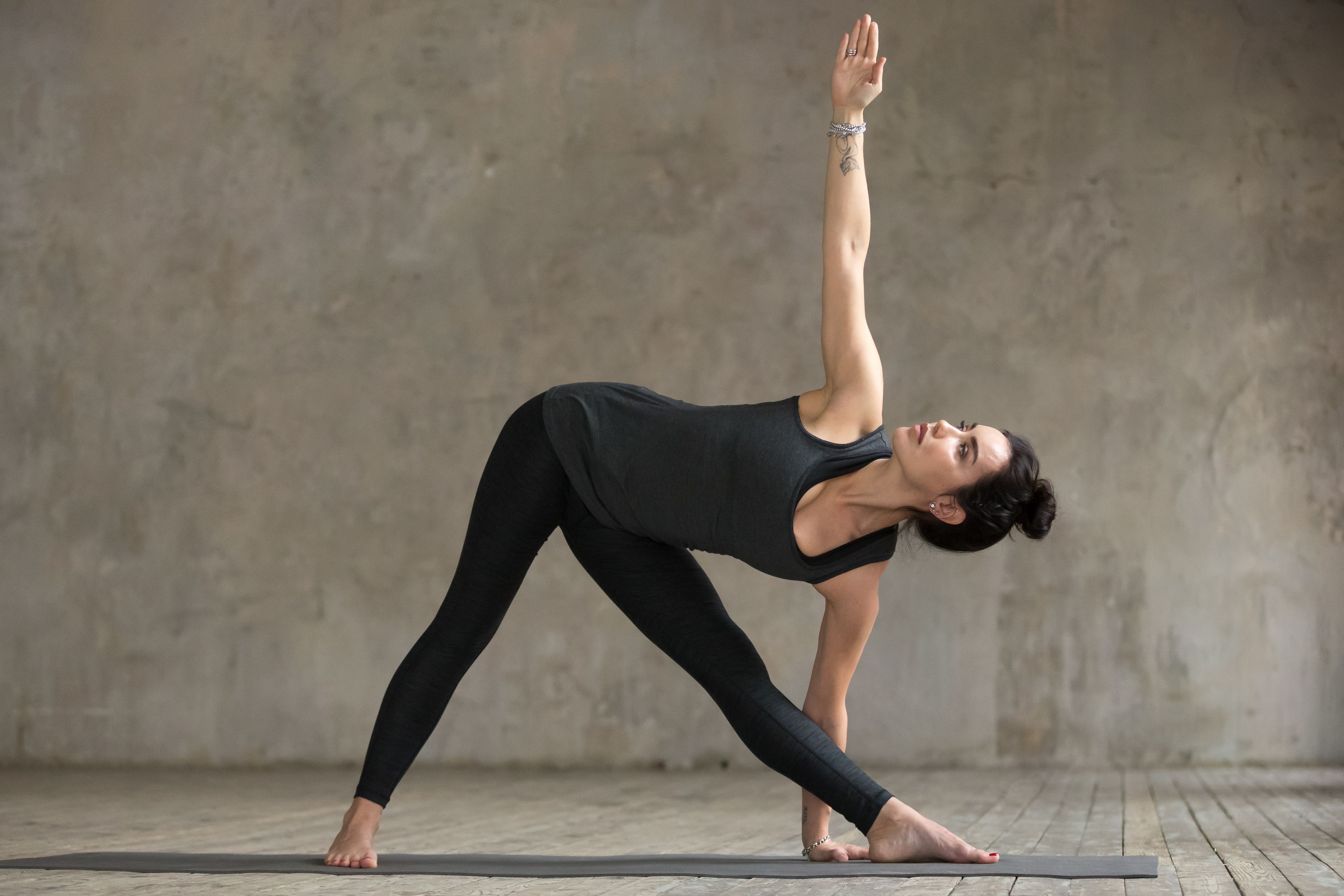
Inhale and bend from your right hip joint over your right leg. Hold your right big toe with your fingers and extend your left arm straight toward the ceiling.
Hold this pose on each side for 5 minutes. Feel your chest muscles, back, and ankles activate, and keep your gaze toward your extended top arm.
2. Parsvottanasana (Intense Side Stretch Pose): Start by stepping wide open to the side, the same as you did for Triangle pose. Inhale and internally rotate your shoulder to bring both arms behind to form a reverse namaste formation.
Once you feel comfortable with your arms at your back, inhale and start to bend your torso onto your extended leg forward.
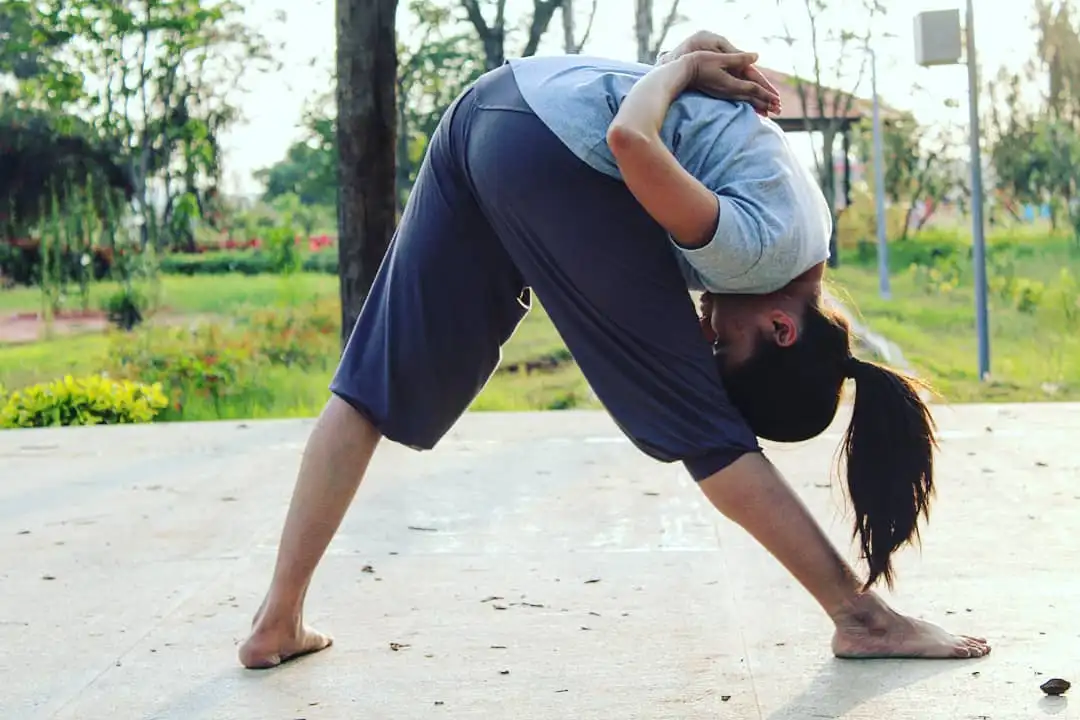
Exhale, rest your head on your leg and feel your obliques, shoulders, tailbone, glutes, and hamstrings activating. Repeat the same on the other side.
Part 2: Step-by-Step Instructions to Perform Ardha Chandrasana
The following are steps to practice the Half Moon pose:
Step 1- Start from Parsvakonasana or Extended Side Angle position. Take 4 to 5 breaths here.
Step 2- Next, move one of your hands back in alignment with your leg extended behind. At the same time, reach your other hand forward, touching the tip of your finger on the mat.
Step 3- Inhale deeply and prepare to balance, exhale, and rise onto your front leg.
Step 4- Your back leg should be lifted up, and your foot should flex sideways in alignment with the side of your mat.
Step 5- Now, root down your balancing foot on the mat, engage your core and quads, and straighten your foundational leg until you feel a good stretch in your hamstrings and glutes.
Step 6- Ensure that your arm is still aligned with your raised leg behind you and that your fingertips touching the mat are aligned with your shoulder. Hold this position for a few breaths.
Step 7- Gaze down, inhale, and reach your top arm up toward the sky in line with your straight arm on the ground (Creating a sideways “T” shape with your arms).
Step 8- If you feel strong while balancing in this pose, then challenge yourself by shifting your gaze from the mat to your raised arm fingertips on the side.
Step 9- Keep inhaling and exhaling while holding Half Moon balance pose. Release by returning to Parsvakonasana and then relax in Uttanasana.
Breath Awareness:
Inhale: While engaging your leg and core muscles, right before getting into the pose.
Exhale: As you raise your extended leg behind.
Inhale and Exhale: While holding the pose on one leg.
Performance Duration for Beginners: Hold Ardha Chandrasana for 15 to 30 seconds on each side.
Performance Duration for Advanced: Hold Ardha Chandrasana for 30-90 seconds on each side
Part 3: Things to Keep in Mind
For a safe and seamless execution of the Half Moon pose, follow these posture cues:
Do not round your spine - Hunching with your spine in Half Moon pose will cause you to trip over and fall. Make sure your spine is lengthened forward, your gaze is focused for the first few seconds on the tip of your fingers, and then you gently shift your eyes to your raised fingers above you.
Keep your leg and hips in line - As you raise your extended leg up into the air, observe how it aligns with your glutes in a mirror. If your leg is raised above the level of your glute muscle, it means you are overextending and can lead to a lower back ache post-practice. So, keep your raised leg aligned straight with your glute muscle for best results.
Part 4: Relaxing Poses After Ardha Chandrasana
The following are a few postures to calm any residual tension in your back legs, core, and spine:
1. Uttanasana (Standing Forward Bend) -
Start from Mountain pose with the inner edges of your feet together. Place both hands on your waist and move your feet slightly hip-width apart. Inhale, roll your shoulders back and down and start to bend forward.
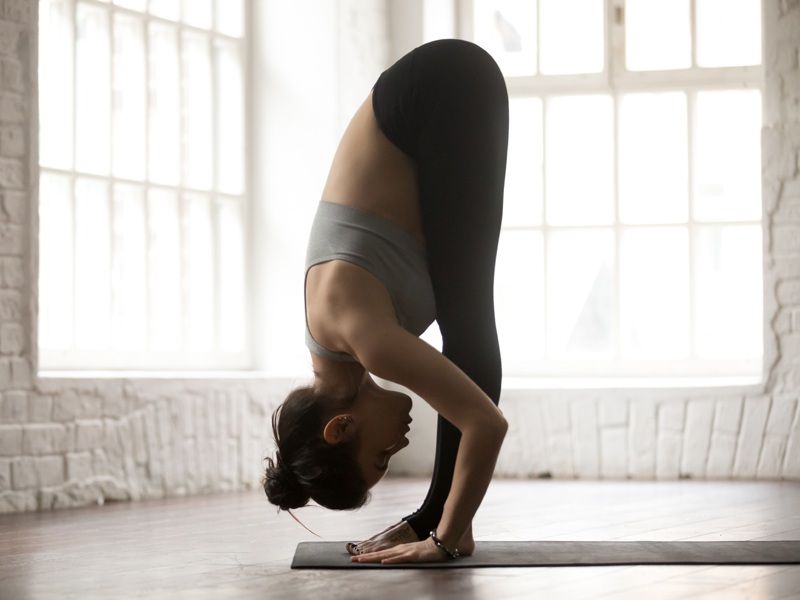
Keep your glutes and core engaged as you bend forward. Once you bend forward entirely, avoid overstretching your hamstrings while you rest your face against your knees.
Hold this for 5 to 10 deep breaths until your legs, shoulders, and spine feel loose and comfortable.
2. Prasarita Padottanasana (Wide-Legged Standing Forward Bend)-
Remove any leftover tension from your inner thighs, neck, spine, and ankles with this Extended Wide-Leg Forward Bend.
Stand in a wide-legged stance with your hands on your waist and toes parallel to each other. Inhale and stretch your spine backward by gently bending your neck at the back. You’ll start to feel your chest and back muscles opening.
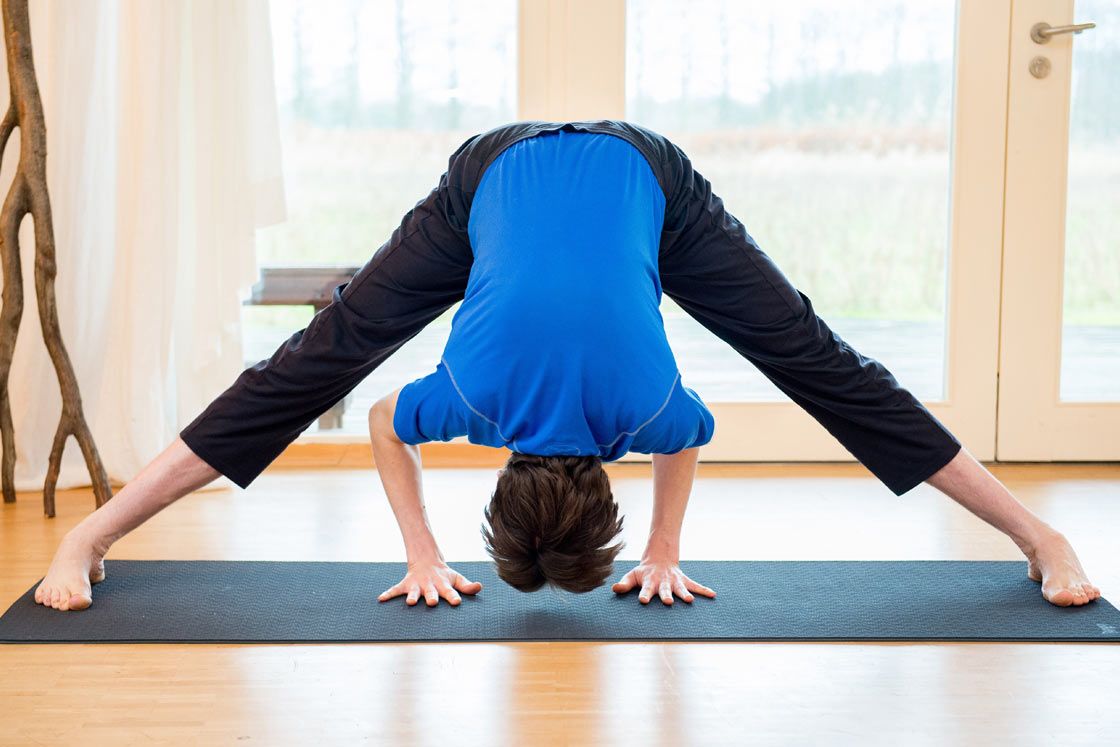
Now, exhale as you bend forward and bring your chest parallel to the ground. Once you reach the ground, place your hands between your legs and relax your neck completely by gazing through your legs.
Hold this position for 5 to 10 deep breaths.
Ardha Chandrasana Variations to Consider
Choose a variation of Half Moon pose that you would like to try, depending upon where you are in your yoga journey:
1. Half Moon Pose on Floor Variation - This variation is for beginners who are still working on developing core strength. Get into a tabletop position, engage your core slightly, and raise your right leg straight off the mat.
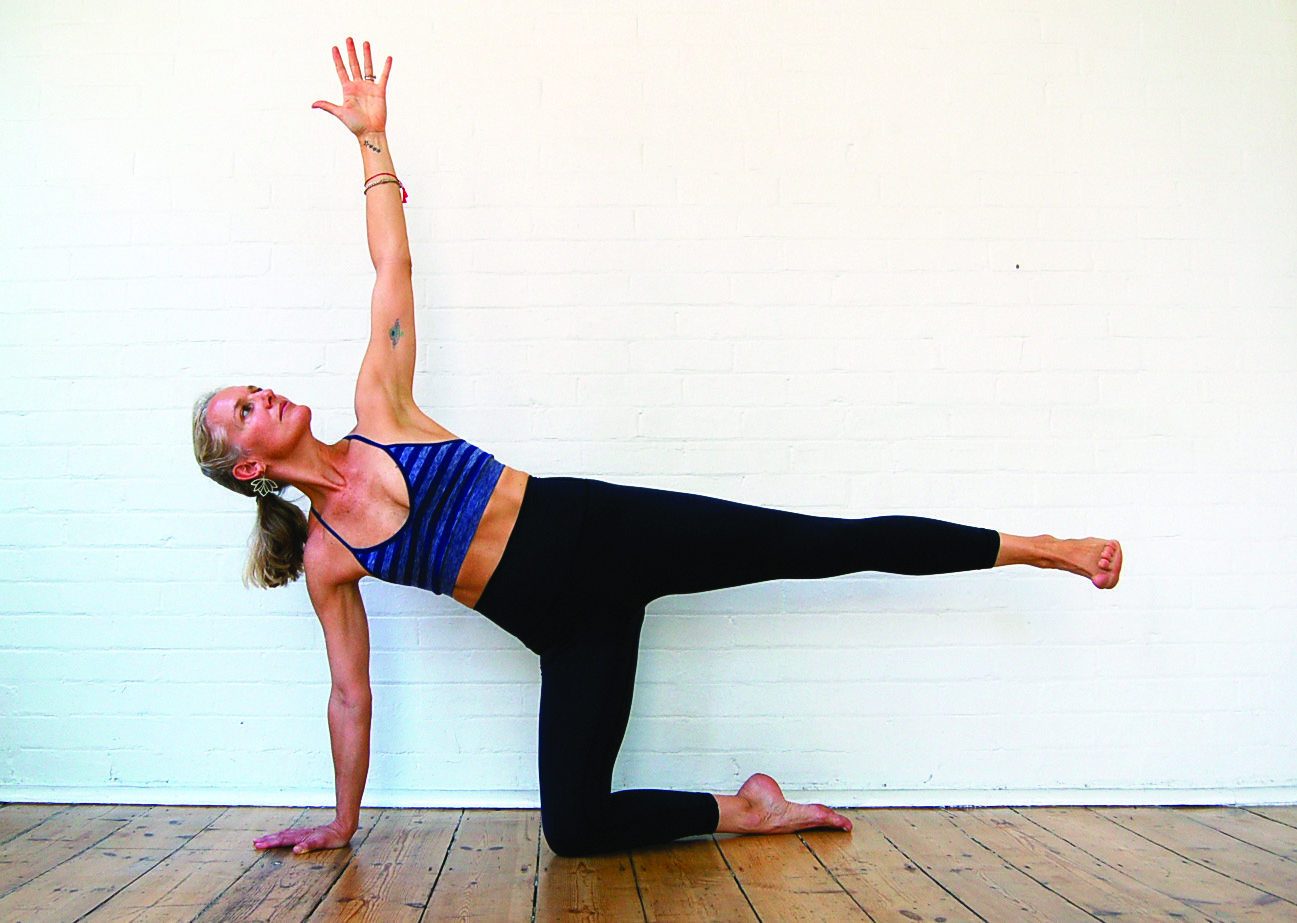
Next, raise your right arm off the mat, rotate your chest upwards, and extend your arm straight towards the ceiling. Make sure both arms are inline to form a sideways “T.”
Hold the pose here on each side for a few minutes and slowly gain some core strength for the main pose.
2. Ardha Chandra Chapasana (Sugarcane Pose) - To achieve this variation, get into the basic Half Moon pose and start to extend your lifted leg straight to the ceiling. Try to straighten your lifted leg as much as possible.

Next, open your chest muscles and rotate your upper body forming a sideways “T” shape with your arms. Shift your gaze to your top arm, bend your extended leg and hold your foot with your hands right where your shin meets your foot.
Hold this semi-standing Bow pose-like structure for a few seconds on each side and work on your back, core, and legs all at once.
3. Parivrtta Ardha Chandrasana (Revolved Half Moon Pose) - This posture is known as a challenging variation because you will be balancing on alternate legs and arms.
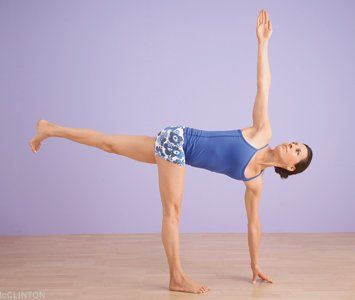
Balance on your right foot and extend your left leg parallel to the ground, with your right arm extended up in the air making a “T” formation with your left arm touching the ground. This is the Revolved Half Moon variation.

Enjoy a Free 1-on-1 Session with a Coach!
Receive personalized guidance tailored to your unique fitness goals, live with a dedicated coach—no credit card required.
Frequently Asked Questions about Ardha Chandrasana
Ardha Chandrasana is good for improving postural imbalance. It increases core and leg muscle stability while improving flexibility and strength in your lower body.
Ardha Chandrasana is a standing balance pose that requires loads of core strength, stability, and mindfulness for execution. Beginners should work on preparing their focus, core strength, and leg muscle stability before jumping directly into Ardha Chandrasana.
Triangle Pose, Sun Salutation, Warrior Pose, and Intense Side Stretch Pose are some excellent preparatory poses for Ardha Chandrasana. Each of these poses will help you activate your knees, spine, ankles, calves, inner thighs, hamstrings, and obliques.
The benefits of Ardha Chandrasana are:
- It improves core balance.
- It enhances leg muscle strength.
- Aids in relaxing mild neck or back pain symptoms.
- It boosts the functioning of small and large intestines.
- It opens the chest, lengthens the spine, and activates the glutes.
Assisted Half Moon Pose on the Floor, Sugarcane Pose, Revolved Half Moon Pose, and Bound Revolved Half Moon Pose are different variations in Ardha Chandrasana.
Parivrtta Ardha Chandrasana, or Revolved Half Moon Pose, is an intermediate-level yoga pose variation for the primary Ardha Chandrasana pose.
In the Parivrtta Ardha Chandrasana, the upper body is balanced on any one leg, and the torso is twisted at the side and your gaze is directed upward.



.webp)
%20(7).jpg)




